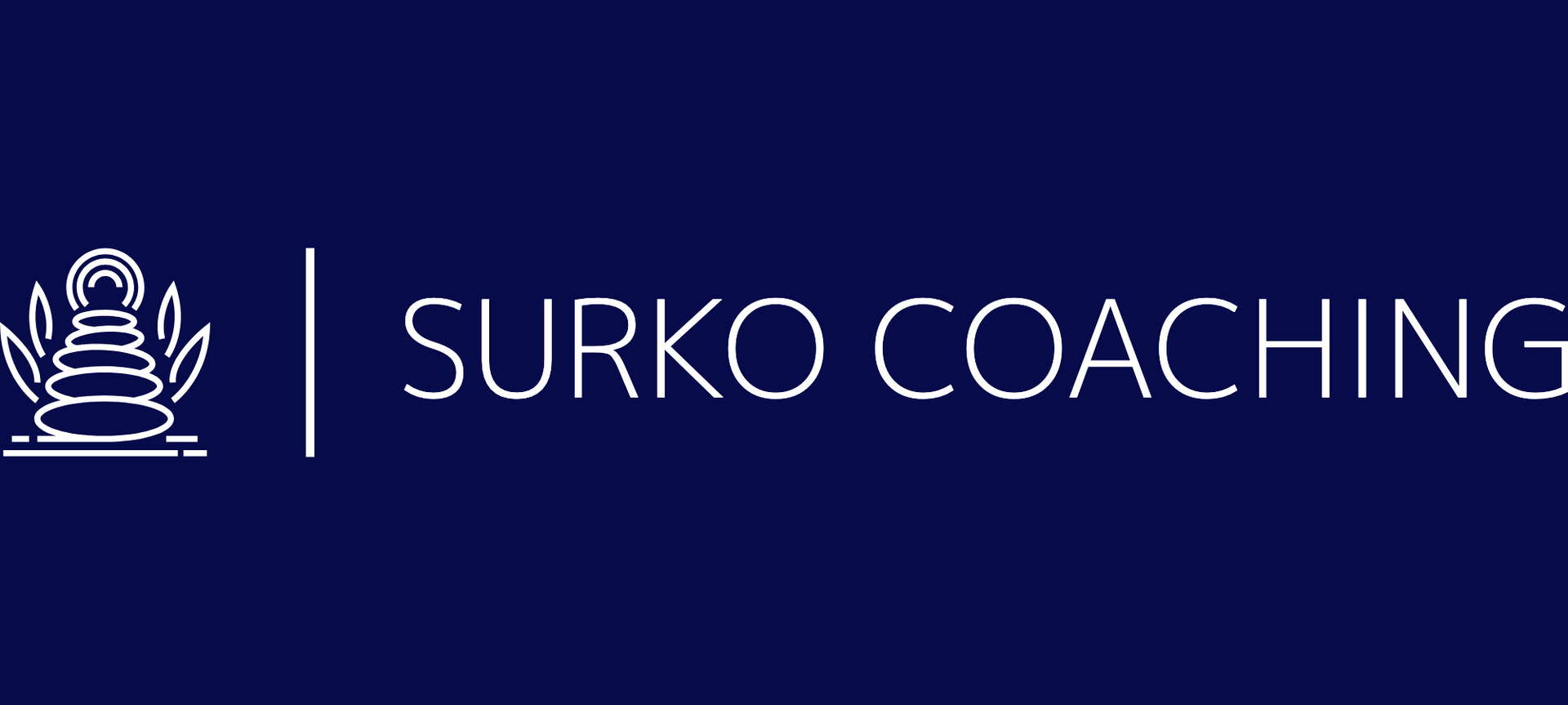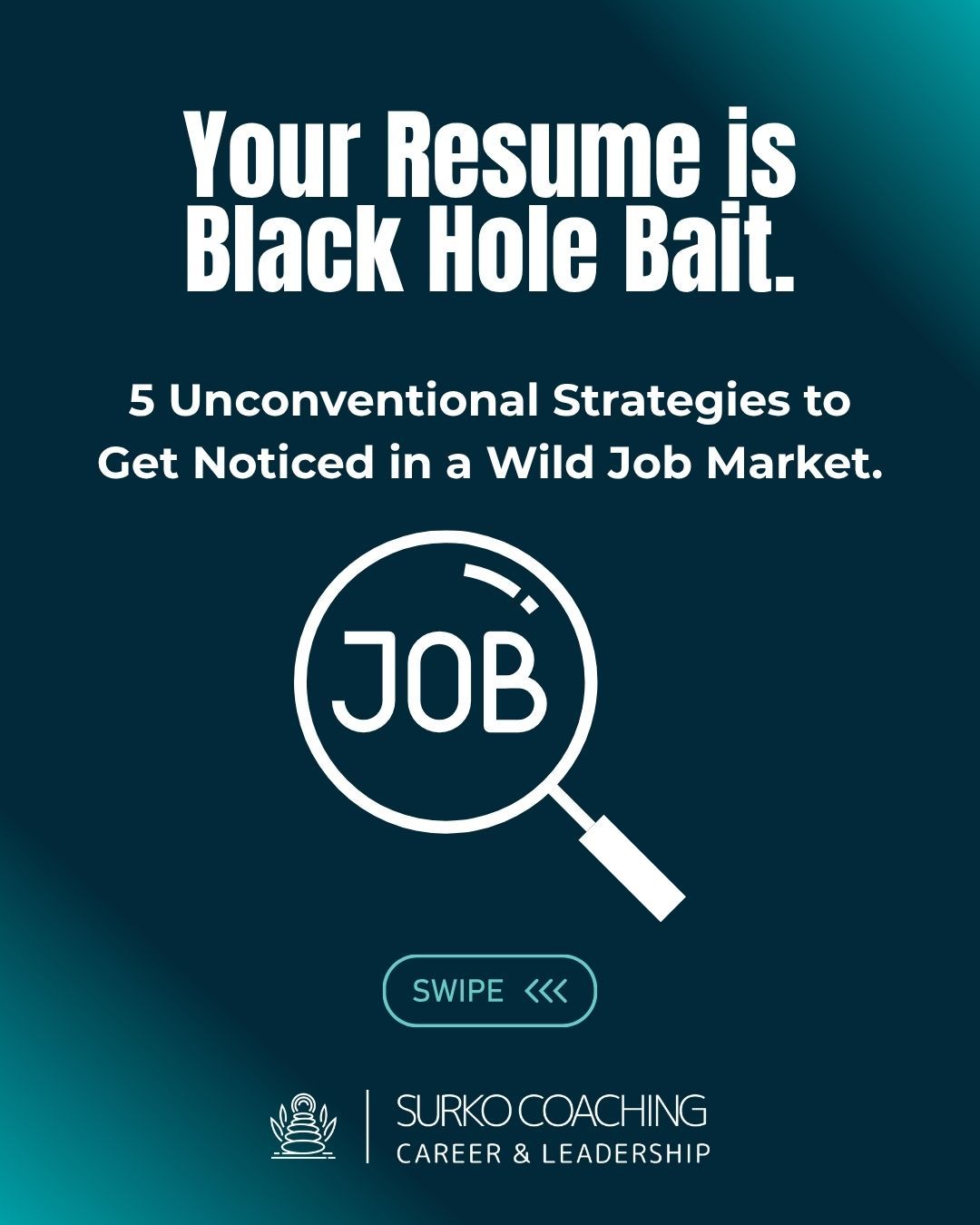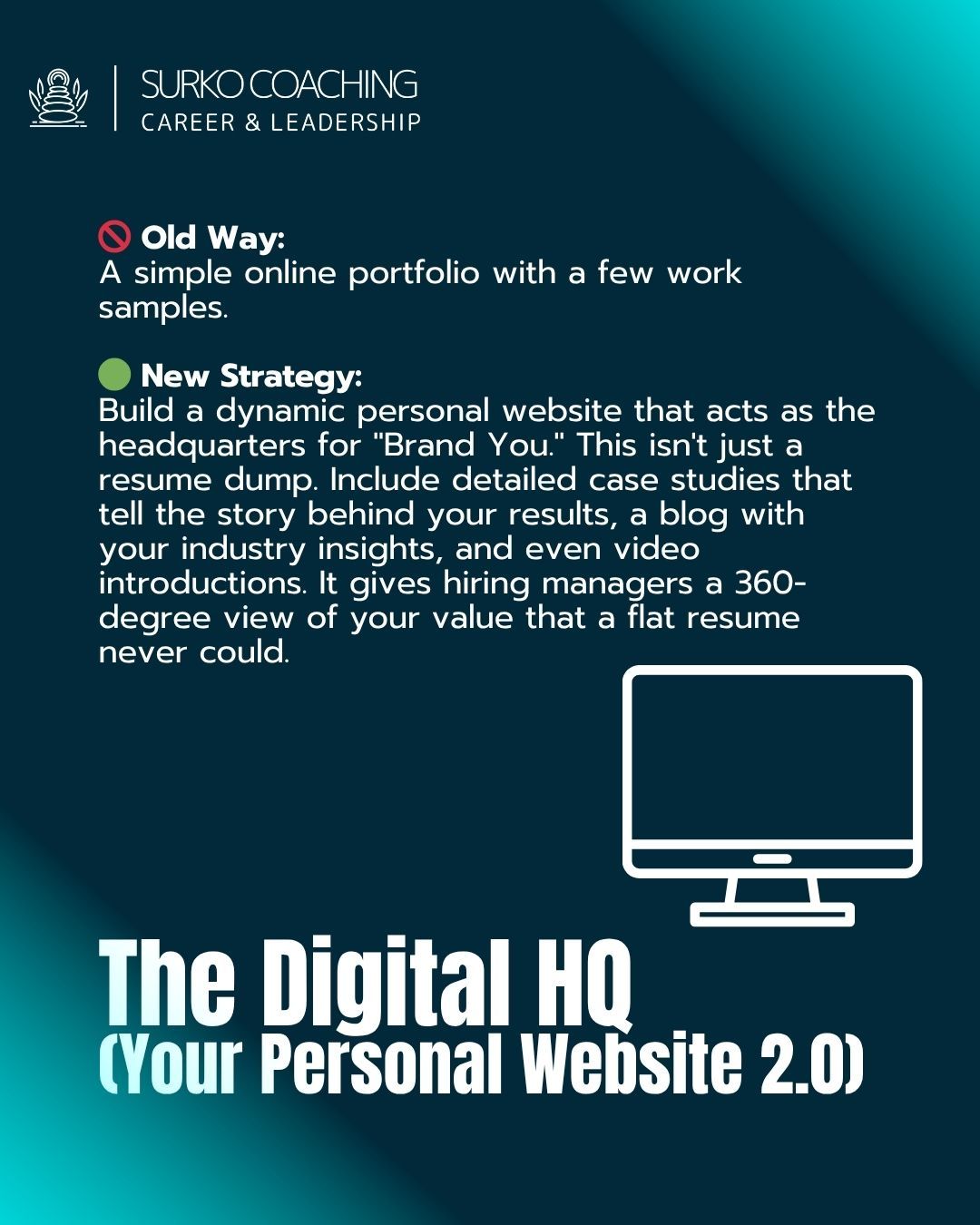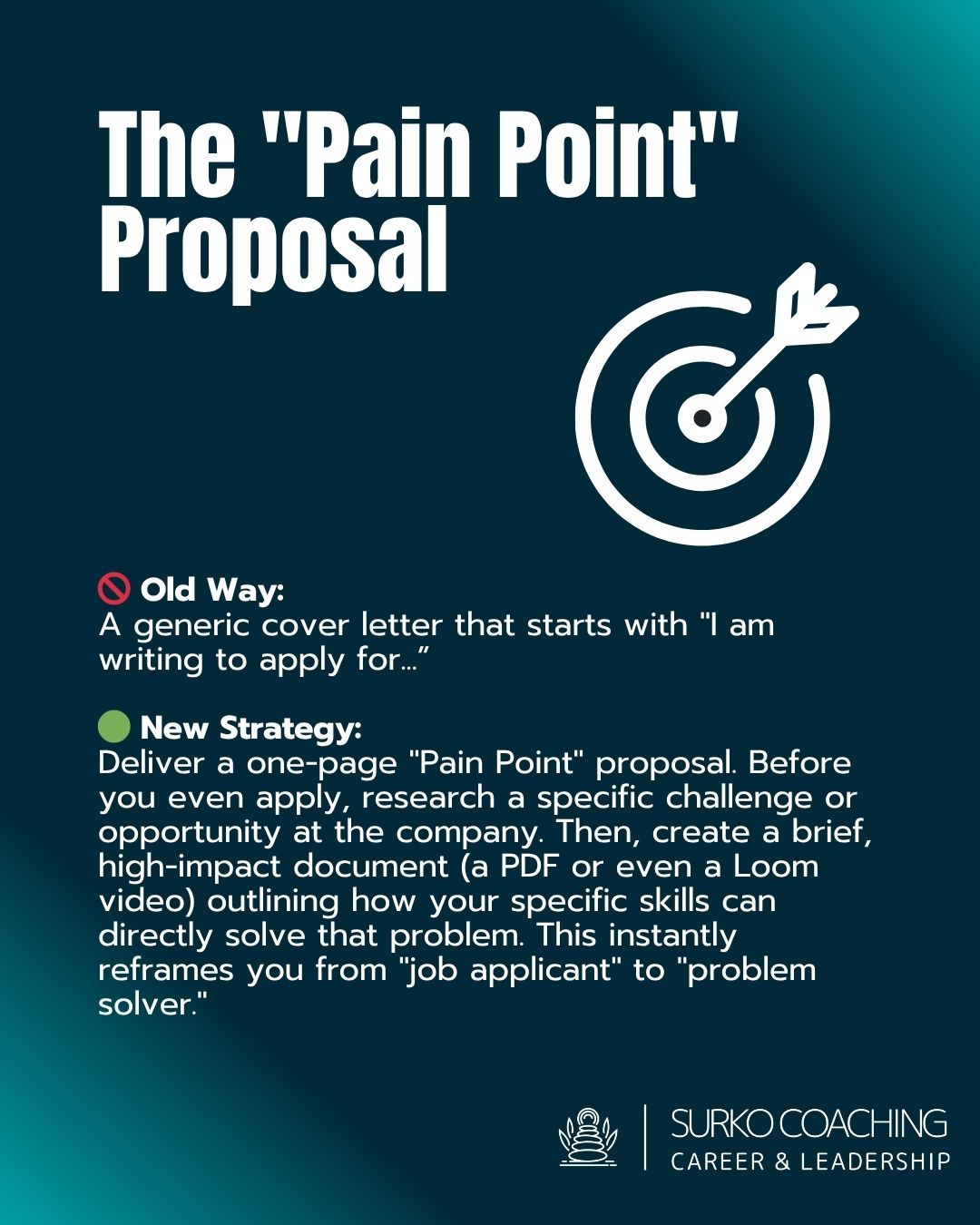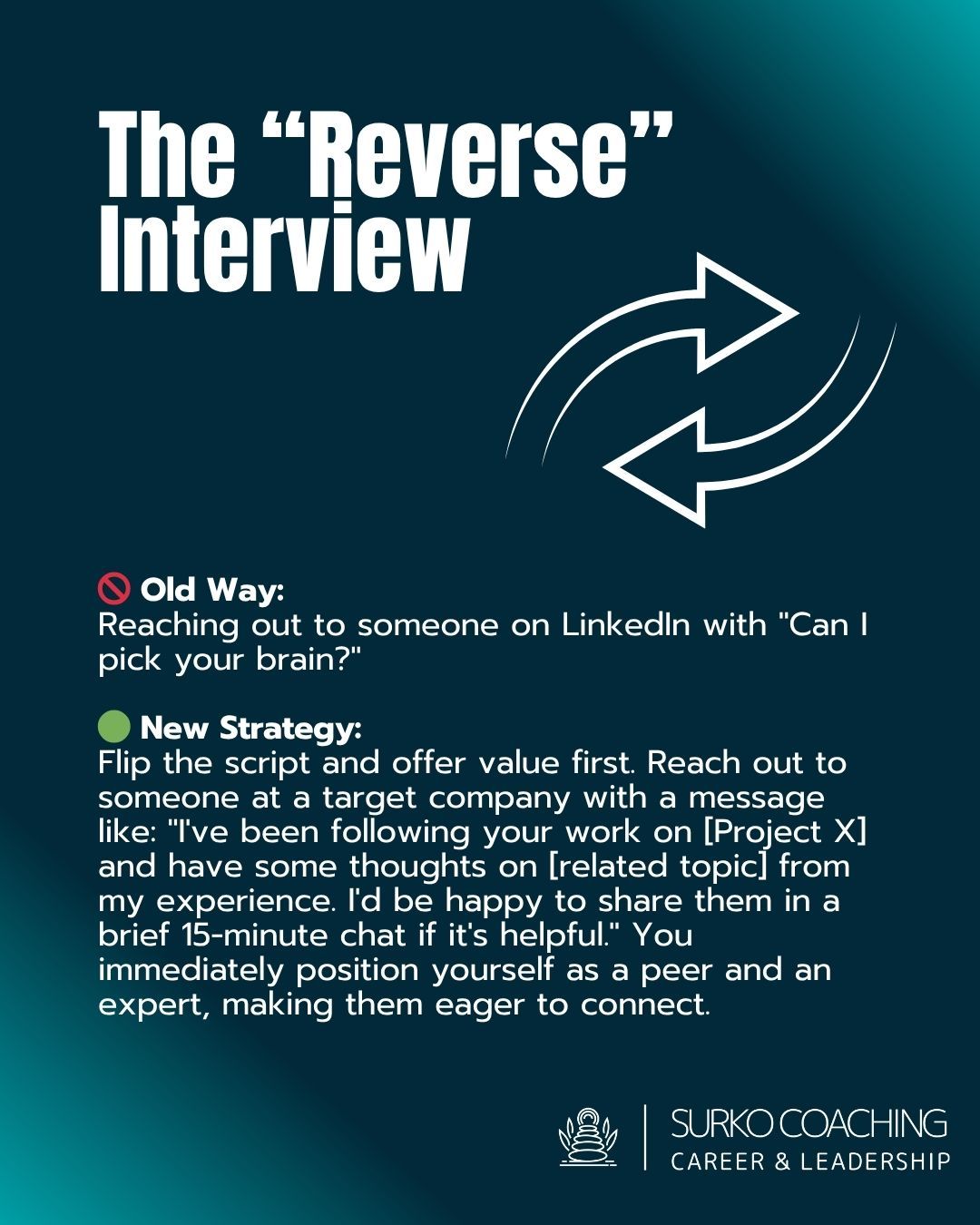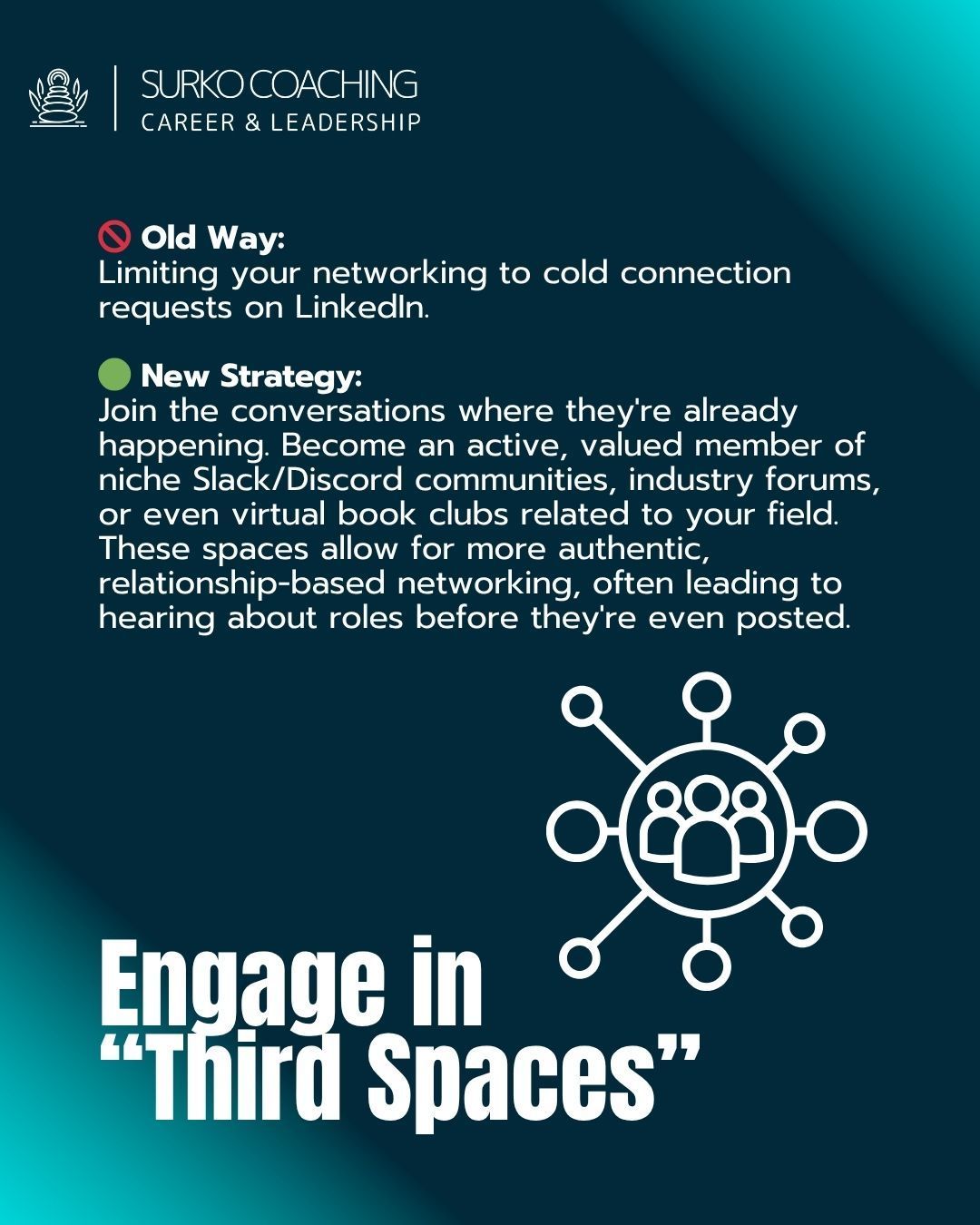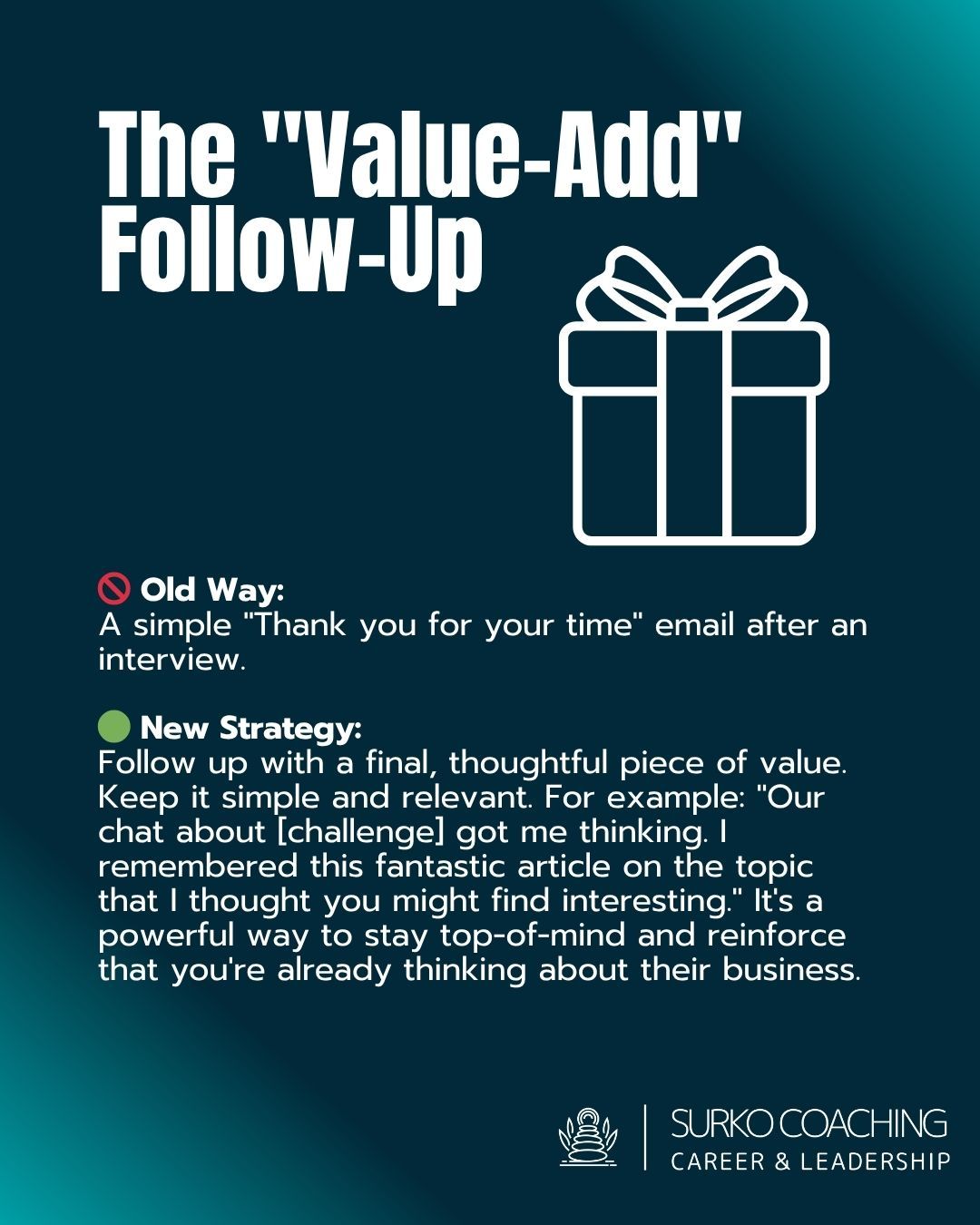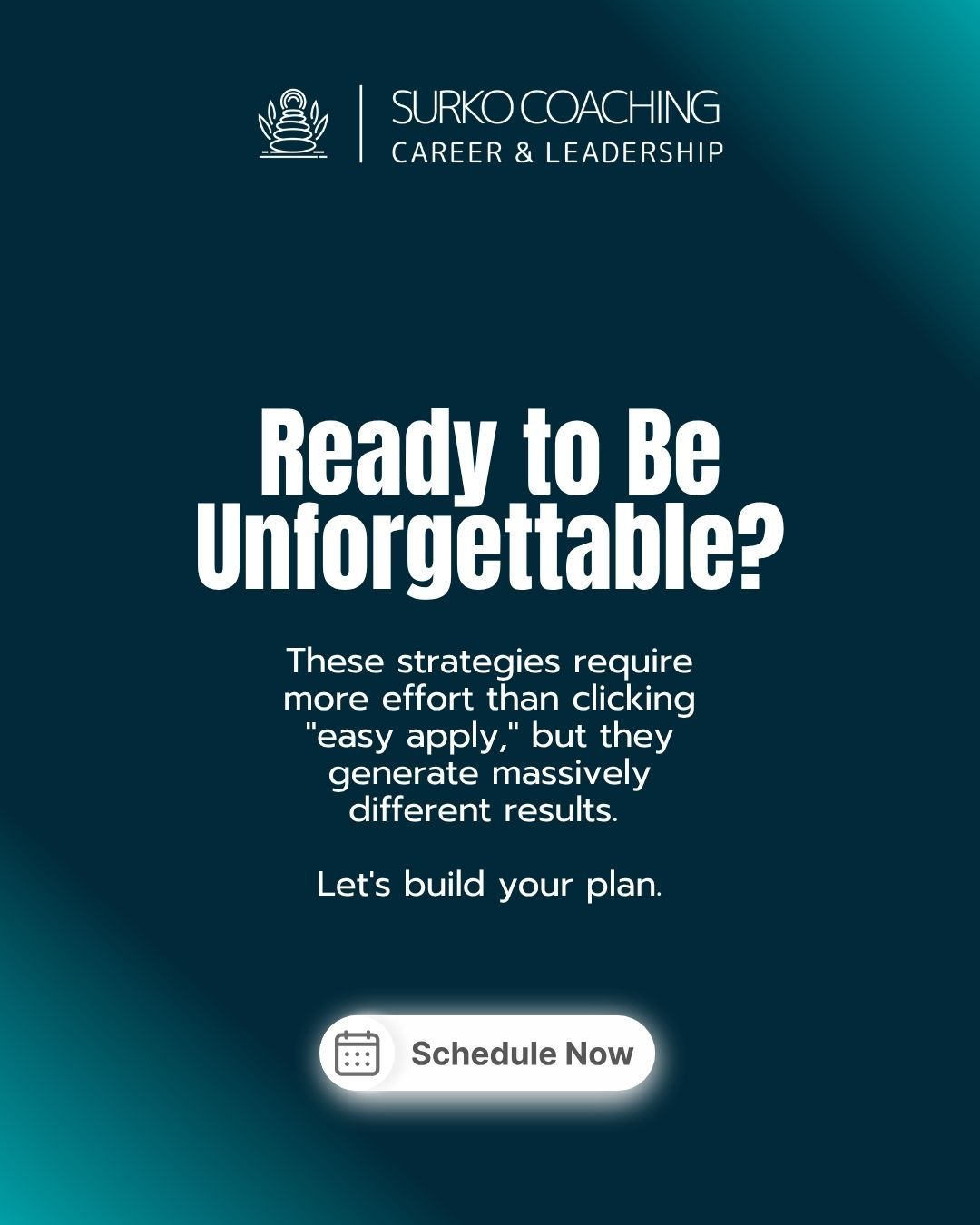Your Resume is Black Hole Bait
Here's How to Get Noticed in a Wild Job Market.
Let's be honest: sending your resume into the digital void and hoping for a response can feel like buying a lottery ticket. The modern job search has become a masterclass in frustration, from AI gatekeepers to the baffling rise of "ghost jobs."
If the old "apply and pray" method isn't working, it's not you—it's the strategy. The candidates who are landing great roles right now aren't just applying harder; they're applying differently. They're moving beyond the resume and treating their job search like a strategic campaign for the most important brand they'll ever manage: themselves.
As a career coach, I'm seeing a major shift away from passive applications and toward proactive, value-driven approaches. Ready to stop feeling like a number and start getting noticed?
Here are some of the out-of-the-box strategies that are actually working right now:
1. The "Pain Point" Proposal.
🚫 Old Way: A generic cover letter.
🟢 New Strategy: Research a company's specific challenge and send a one-page proposal outlining how your skills can solve it. You instantly become a problem solver, not just an applicant.
2. The Digital HQ (Your Personal Website).
🚫 Old Way: A simple portfolio.
🟢 New Strategy: Build a dynamic personal site with case studies that tell the story behind your results. A rich, 360-degree view beats a flat resume every time.
3. The "Reverse" Informational Interview.
🚫 Old Way: "Can I pick your brain?"
🟢 New Strategy: Offer value first. Try: "I have some insights on [Project X], happy to share in a brief chat." This flips the script and positions you as a peer.
4. Engage in "Third Spaces."
🚫 Old Way: Only using LinkedIn for networking.
🟢 New Strategy: Join niche Slack/Discord communities or industry forums. Build authentic relationships where the real conversations are happening.
5. The "Value-Add" Follow-Up.
🚫 Old Way: A simple "Thank you" email.
🟢 New Strategy: After an interview, send a relevant article or a thoughtful insight related to your conversation. This shows you're still engaged and thinking about their problems.
These strategies require more effort than clicking "easy apply," but they generate massively different results.
Which one of these could you try this week? Let's discuss.
